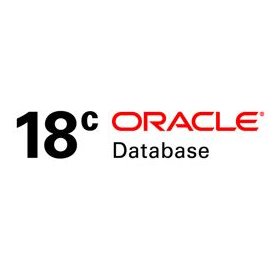Oracle Database 18c (18.3) is available for download for windows platform since August 22, 2018. If you are new to Oracle or if you are a developer and need a database to play with, you can install an Oracle 18c database quickly on your laptop with a few clicks. Read “Oracle18c Database on your Windows laptop in 6 clicks!“. If you installed the Oracle Database 18c software, and want to create a new database swiftly, read “Create Oracle Database 18c in 3 clicks!“
If you are setting up a production system or a database for
OUI and DBCA have the advanced configuration. The OUI advanced configuration is not “advanced” enough, DBCA lets you customize the database configuration options even more – good for an experienced DBA. In my opinion, Oracle should remove the “Advanced Configuration” option from OUI, thus make DBAs to force use DBCA. Let’s see the “Advanced” options difference when using the OUI to create the database vs using DBCA to create the database.
Installation Type (OUI & DBCA)
Database Edition & Software Owner (OUI only)
These screens are part of the Oracle Software install.
Choosing Database Type
Database Identification
Database Storage
Configuration Options
OUI has enough configuration options, but DBCA has a lot more.
- Memory:
- OUI: Automatic memory management and for shared memory management, you only specify the total memory, OUI allocates the PGA and SGA.
- DBCA: Automatic memory management,
Automatic shared memory management, and Manual shared memory management options.
- Sizing:
- OUI: No option to change block size (8k) or the number of processes.
- DBCA: Option to change block size if the template used is “Custom Database”. Specify processes.
- Character Sets:
- OUI: Option to choose database character set.
- DBCA: In addition to database character set, choose national character set, language, and territory.
- Connection mode:
- OUI: No option to change – dedicated server mode.
- DBCA: Option to configure a dedicated server or shared server mode.
- Sample Schema:
- OUI and DBCA give the option to install the sample schema.
MEMORY:
CHARACTER SETS:
SIZING & CONNECTION MODE (DBCA ONLY):
Management Options
Schema Passwords
Database Creation Option – DBCA Only
Summary
If you plan on creating a database using a GUI tool for enterprise applications, always use DBCA. DBCA gives more flexibility and options. If you are installing the software and want a database with basic default options, use the OUI starter database option, desktop class.
DBCA Database Creation Screens
All the screens that belong to DBCA are in the gallery below. You can also see the options included with the OLTP and DW templates – both are very much similar, one difference is the parameter star_transformation_enabled=TRUE in DW template. Both DW and OLTP include the pre-created data files, so the database creation would be much faster. The custom template builds the database from scratch, thus takes longer.

DBCA 1: Select Database Operation 
DBCA 2: Select Database Creation Mode 
DBCA 3: Select Database Deployment Type 
DBCA 3a: Data Warehouse Template Options 
DBCA 3b: General Purpose or Transaction Processing Template Options 
DBCA 3c: Custom Database Creation Template options 
DBCA 4: Specify Database Identification Details 
DBCA 5: Select Database Storage Option 
DBCA 6: Select Fast Recovery Option 
DBCA 7: Specify Network Configuration Details 
DBCA 8: Select Database Options – Only available if Custom Database Creation template is chosen in Screen 3. 
DBCA 8: Select Oracle Data Vault Config Option 
DBCA 9a: Specify Configuration Options – Memory 
DBCA 9b: Specify Configuration Options – Sizing 
DBCA 9c: Specify Configuration Options – Character Sets 
DBCA 9d: Specify Configuration Options – Connection Mode 
DBCA 10: Specify Management Options 
DBCA 11: Specify Database User Credentials 
DBCA 12: Select Database Creation Option 
DBCA 13: Summary




























